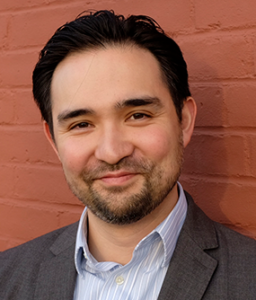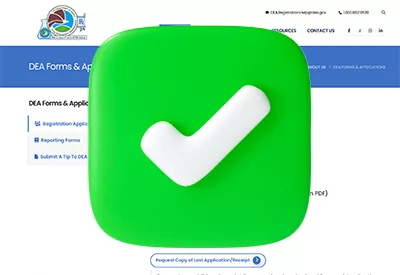Substance Use Disorder Treatment: Medication or Psychotherapy?
Noah Capurso, MD, MHS. Assistant Medical Director, Addiction Services Division, Connecticut Valley Hospital; Associate Clinical Professor of Psychiatry, Yale University; Editor-in-Chief, The Carlat Addiction Treatment Report.
Dr. Capurso has no financial relationships with companies related to this material.
Carla, a 38-year-old woman, comes to your office seeking treatment for opioid use disorder (OUD). She has had problematic opioid use for the past 10 years, but until recently she has been able to meet family and work obligations. Now her use has escalated, and she finds it difficult to function. She has never had treatment before and wonders whether her best option would be starting a medication or engaging in psychotherapy. What do you tell her? How would your answer change if she were using stimulants instead of opioids? What about alcohol?
Medications and psychotherapy are the two cornerstones of addiction treatment, but their efficacy varies depending on the situation. Some substance use disorders (SUDs) respond best to medications, others to psychotherapy, and some to both. Understanding the evidence behind each modality can guide treatment planning and inform patient decision making. This article reviews the evidence for different treatment approaches and provides clear advice to help clinicians and patients tailor treatment for the most effective outcomes.
Considering SUD treatment on a continuum
Visualizing treatment modalities along a continuum—with medication on one end and psychotherapy on the other—can help structure clinical conversations early in treatment (see “The SUD Treatment Continuum” figure below). This is not to say that different approaches cannot be combined, or that any SUD lies completely on one end of the spectrum, but picturing where each SUD falls along this continuum can help steer the conversation as you and your patient collaborate on a treatment plan.

The SUD Treatment Continuum
Opioids
Medication is the cornerstone of OUD treatment. The three effective medications for opioid use disorder (MOUDs) are methadone, buprenorphine, and injectable naltrexone.
Methadone and buprenorphine have not only been shown to decrease opioid use and protect against overdose, but are associated with other beneficial outcomes as well, including lowering rates of overall mortality and deaths by suicide, cancer, cardiovascular disease, and all substance-related causes (Santo T et al, JAMA Psychiatry 2021;78(9):979–993).
Naltrexone has a smaller evidence base, though it is growing. The biggest boost for naltrexone came in 2018: A landmark trial found that although injectable naltrexone was more difficult to start than buprenorphine, the two medications were equivalent in terms of relapse rates, abstinence days, and craving suppression once initiated (Lee JD et al, Lancet 2018;391(10118):309–318). Since then, injectable naltrexone has been shown to be particularly effective for homeless individuals (Nunes EV et al, Am J Psychiatry 2021;178(7):660–671).
Given the strong evidence for all three MOUDs, choosing between them comes down to accessibility and patient preference. Many consider methadone and buprenorphine to be first line, given the more extensive evidence base, but intramuscular naltrexone is also a reasonable choice for the right patient. You can learn more about how to choose between MOUDs in CATR July/August/September 2023. Beyond MOUD, some patients may benefit from adjunctive psychotherapy, group therapy, or psychosocial interventions, though the overall efficacy of such treatments may be limited (Amato L et al, Cochrane Database Syst Rev 2011;(10):CD004147).
Stimulants
Stimulant use disorder (StimUD) lies on the other side of the SUD treatment continuum. Unlike OUD, patients with StimUD benefit most from behavioral interventions. The most effective is contingency management (CM), a program where patients are incentivized to maintain abstinence, often in the form of cash rewards (Batki S et al, J Addict Med 2024;18(1S Suppl 1):1–56). Learn more about CM in CATR October/November/December 2024.
Though effective, CM can be difficult to access due to funding challenges. Fortunately, other forms of psychotherapy, including cognitive behavioral therapy (CBT), motivational interviewing (MI), and psychodynamic psychotherapy, have shown efficacy in StimUD as well. A recent meta-analysis showed that behavioral and psychosocial interventions not only reduce patient dropout rates but also increase length of abstinence and reduce frequency of stimulant use (Minozzi S et al, Cochrane Database Syst Rev 2024;2(2):CD011866).
While behavioral interventions form the foundation of StimUD treatment, off-label medications can be helpful. Studies have found that topiramate can help participants cut down on cocaine use (Johnson BA et al, JAMA Psychiatry 2013;70(12):1338–1346). In another study, a combination of bupropion and injectable naltrexone led to reductions in methamphetamine use (Trivedi MH et al, N Engl J Med 2021;384(2):140–153). Other medications that have shown promise include mirtazapine, modafinil, bupropion monotherapy, disulfiram, and (in cases of comorbid ADHD) prescription stimulants. While these medications can be helpful for some, the overall treatment benefits tend to be modest, and emphasis should be on available behavioral treatment modalities.
Alcohol
Alcohol use disorder (AUD) lies in the middle of the SUD treatment continuum, with medications and psychotherapy both having evidence of effectiveness. A 2006 landmark study compared naltrexone, acamprosate, combined behavioral interventions (CBI), and various combinations of these treatments (Anton RF et al, JAMA 2006;295(17):2003–2017). Interestingly, naltrexone and CBI—a medication and a psychotherapy—were the most effective interventions. Both led to similar improvement in abstinence, though naltrexone did have an edge in reducing heavy drinking days.
Medications
The three FDA-approved AUD medications are naltrexone, acamprosate, and disulfiram. Naltrexone is usually considered first line due to its ease of use and low side effect burden; additionally, unlike the other medications, naltrexone has been associated with “real world” benefits outside of the tight confines of clinical trials (Heikkinen M et al, Addiction 2021;116(8):1990–1998). Gabapentin and topiramate are off-label options that have shown promise. For an overview of medication options for AUD, see CATR March/April 2022.
Psychotherapy
Various types of psychotherapy have been shown to be effective for AUD, including MI, CBT, CBI, and even CM. Mutual help groups, such as Alcoholics Anonymous and SMART Recovery, can also be beneficial, especially when they are paired with professional 12-step facilitation (Kelly JF et al, Cochrane Database Syst Rev 2020;(3):CD010216).
Tobacco
Like alcohol, tobacco use disorder (TUD) responds to both medication and behavioral-based treatments.
Medications
The FDA has approved three medications for TUD treatment: varenicline, bupropion, and nicotine replacement therapy (NRT). Varenicline and combination NRT—a nicotine patch combined with gum or lozenges for cravings—are particularly effective. While bupropion can be helpful, it is generally considered second line due to its lower efficacy compared to varenicline and combination NRT. Interestingly, research shows that varenicline remains the best option even for patients with comorbid depression (Cinciripini PM et al, Depress Anxiety 2022;39(5):429–440).
Psychotherapy
Individual counseling, CBT, MI, CM, and group models of psychotherapy all have supporting evidence (Hartmann-Boyce J et al, Cochrane Database Syst Rev 2021;1(1):CD013229).
Alternative therapies
Electronic nicotine delivery systems (ie, e-cigarettes) have emerged as a potential tool for smoking cessation, as shown in studies (Lindson N et al, Cochrane Database Syst Rev 2024;1(1):CD010216). However, they can be a double-edged sword, as some people may simply replace traditional cigarettes with e-cigarettes rather than quit nicotine altogether (Auer R et al, N Engl J Med 2024;390:601–610). Though we don’t have long-term safety data on e-cigarettes, they are almost certainly safer than traditional cigarettes and so are still worth considering for patients who have failed FDA-approved medications.
Putting it all together
Patients seeking SUD treatment for the first time may not know where to start. Others may come in with a preconceived idea of what treatment entails or what type of treatment they want. It will be up to you to collaborate with your patient and come up with a considered, evidence-based treatment plan. If a patient comes seeking treatment for OUD, insist on MOUD as part of the plan. If a patient presents seeking treatment for StimUD, steer them toward psychotherapeutic treatments, especially CM if available, with medication reserved as an adjunct. In contrast, patients trying to stop drinking or quit smoking do not necessarily need to be steered toward a particular modality, as medication and psychosocial interventions have both been shown to be effective.
Carlat Verdict: Medication and psychotherapy are the two cornerstones of SUD treatment, but choosing between them depends upon which substance your patient is using. Visualizing treatment options along a spectrum can help educate and guide patients toward the most effective treatment modalities.

Newsletters
Please see our Terms and Conditions, Privacy Policy, Subscription Agreement, Use of Cookies, and Hardware/Software Requirements to view our website.
© 2025 Carlat Publishing, LLC and Affiliates, All Rights Reserved.


_-The-Breakthrough-Antipsychotic-That-Could-Change-Everything.webp?t=1729528747)



